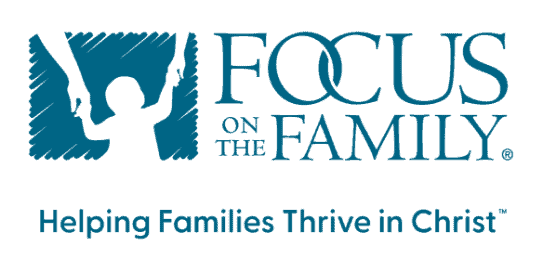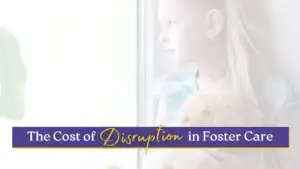The past year has been filled with challenges for everyone. It’s hard to imagine being a young adult during this time. Not too long ago, our youth’s biggest worry was whether they would get a snow day. While they were complaining, there would be some adult waiting to remind them about the old days; their parents had to walk two miles both ways to get to school. Our adolescent’s stories will now be about having an in-person graduation ceremony and trying to maintain social connections, all the while surviving a global pandemic. For even the most well-rounded youth, this seems like an unmovable mountain. Consider, in addition to all of this, being a young person trying to navigate preparing for aging out of the foster care system.
Youth Aging Out
Having worked in the Child Welfare system for almost 15 years, I have fulfilled many roles. I spent the better part of those years working with adolescents ages 14-21 aging out of the foster care system. There is a special place in my heart for helping youth find connections that will last a lifetime and prevent homelessness. Over time, I have tried my best to advocate for youth aging out of the foster care system. Despite the best intentions of the “system,” time after time, it has failed our young people. Acknowledging that I too am a part of that system, daily I ask myself, “What do I need to do differently to get it right”?
The voice of the youth
There is a story of a youth that has stuck with me over the years. It drives my approach in advocating for youth aging out of foster care. It is a memory of a 21-year-old that was preparing to leave the system after bouncing around from placement to placement over 12 years in care. She sat at the table in a room full of professionals who had worked on her treatment team over the years.
These people included a caseworker, Guardian Ad Litem, a Chafee worker, and a few others. During the meeting, the young lady said that she would have been better off if we [the system] would have left her with the abusive family that she was removed from because all we [the system] had done was make her homeless. That young lady was leaving the Child Welfare system with nowhere to go. With no family to return to since she’d been isolated from her family for years.

As I recall that young lady’s words, I am trying to fight back the tears from rolling down my face. I have carried a very clear image of her face, resounding audio of her words, and that same gut-wrenching feeling in the pit of my stomach that I use as a reminder. “If I cannot help, the very least I should do is, strive not to hurt the situation.”
What the numbers say
In Colorado, 46% of the youth that has exited the foster care system have ended up homeless. According to the Point in Time survey (further referenced as PIT) conducted by Pikes Peak Continuum of Care, there was 2,029 youth identified as students experiencing homelessness in January 2021 and within the Pikes Peak Region. More pointedly, 120 of those experiencing homelessness were transition youth between the ages of 18-24. If we highlight Colorado, we find that Colorado has the 3rd highest rate in the country for homelessness.
While Colorado is growing every day, housing options for the working class are almost unobtainable as the cost of living is so high. No matter what language these stats are interpreted in, even making minimum wage, our youth will need assistance to make it. The statistics mentioned indicate that accessing reasonable and affordable housing will be near impossible for an adolescent aging out of the foster care system.
Where are the resources?
It seems simple to just give youth aging out of foster care a housing voucher and think that will fix the problem. Unfortunately, even if youth can get a voucher, they must find somewhere to use it. What about all this housing I see popping up? Landlords are far more likely to accept residents that they can charge the full amount for rent than that of a voucher client. So, what is the answer? The fact is, I don’t know what the answer is, but much thought has gone into where we might start.
Like any puzzle, there are multiple ways to solve the riddle. The start of the solution requires that we work together. We as in the “system” and community partners. Providers that serve youth must build the network of people invested in decreasing the number of youth aging out of the foster care system to homelessness. This network must include landlords that are willing to accept vouchers.
Increase Vouchers
Increasing the number of vouchers that are accessible to youth aging out of foster care would be the piece of the puzzle. The current coordinated entry system does not accommodate youth coming out of Child Welfare or Department of Youth Services systems. Recently the government has released funds for Foster Youth Initiative vouchers or FYI vouchers. The barrier remains easier access to that funding for youth aging out of foster care.
Wrap Around Support
While housing is a huge component of stability, the other component is to ensure each adolescent has built-in wrap-around supports. Or services to span the entire time the youth accesses the voucher. Or both. These wrap-around supports services should look to include strategic check-in points that monitor for progress towards self-sufficiency. With the expansion of Chafee services (a program designed to help foster care youth ages 14-21 now 23), the opportunity to support youth that has aged out of foster care is more accessible. Applying these components could be a good starting point when looking to address homelessness for youth aging out of the foster care system.
It takes a village
Ask yourself… Am I able to help? Can I be a part of the solutions listed above? As the question lingers in the back of your mind, consider whether being an empty nester or a landlord offers you an opportunity to positively impact the future of adolescents aging out of the foster care system? Instead of turning that space into a reading nook, a junk room, or bed and breakfast, please consider renting out that space.

There are many opportunities to partner with your local Human Services agency or shelters. I ask you to consider becoming a part of our transition’s village. Start where you are comfortable. Partner by volunteering your time or donating items to help a young person with their first apartment. Consider taking a leap of faith; open your heart and possibly your home. Your next move and/or choice could prevent homelessness for a foster youth aging out of care.
















